If there’s one thing the current administration has given the people, it’s fuel for creative fire. Be it political commentary blogs, new Purge movies, and now Black Mask Studios Calexit; people who want to have the real conversations are picking up where protests leave off. This week, Calexit takes a look at a dystopian America where immigration has become a dying cause. The series introduces you to a world of worst case scenario as California is under siege by a fascist United States government. It’s a brutally depicted world where homes can be searched without the process of a legal system and even the most white collar of crimes carries severe punishment. You’ll meet a young woman named Zora, a key figure in a rebellion of coalition immigrants trying to separate California from the military ruled country.
We talked with writer Matteo Pizzolo about the inspirations and scary ramifications of this new comic series. Before that, check out this SDCC exclusive variant for Black Mask #1 available at the show. A style which might look familiar if you have a collection of punk rock 45’s. This cover was illustrated by Winston Smith the artist whose work graced the album covers of THE DEAD KENNEDYS.
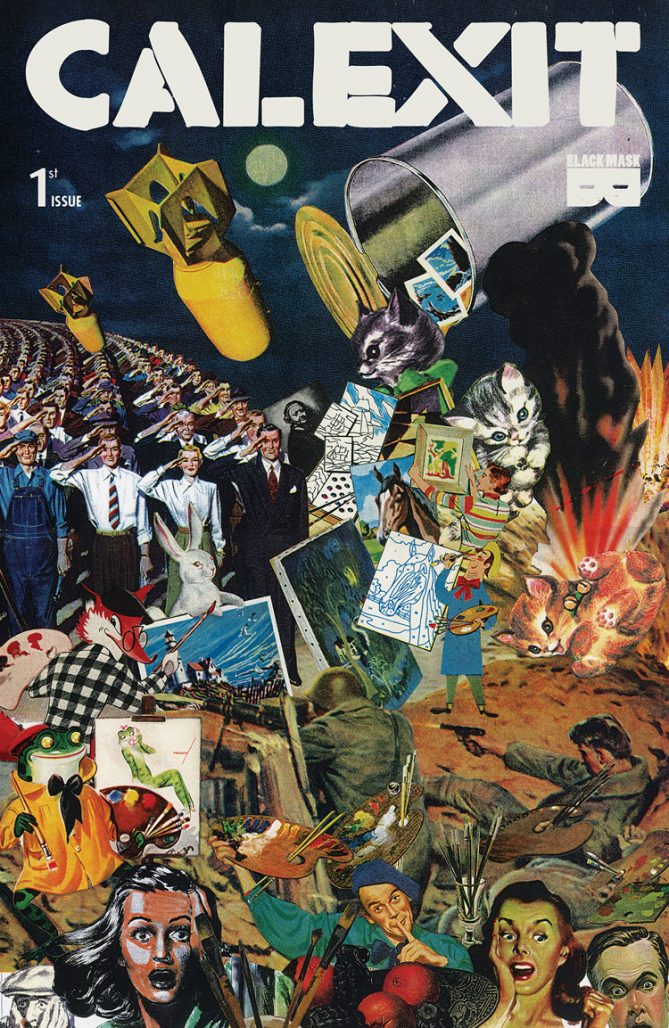
COMICSBEAT: Calexit goes full worst case dystopia scenario in the current political landscape how do you balance telling an entertaining story with the grim realism without making you want to lose all hope and move to Canada?
Matteo Pizzolo: Well, dystopia may be the landscape of the story, but the heart of the story is in the characters. They’re not desperate and despairing, they’re out there fighting and raising a resistance against the dystopia.
Zora is a young woman immigrant who’s being tracked by Father Rossie, the most feared immigrant-hunter in Occupied LA. But Zora isn’t just hiding, she’s a leader in the resistance movement. She’s taking action. She’s a leader and she makes tough, awful decisions as if she were some hardened general, but really she’s been hurtled into this situation and is doing the best she can.
The setup of the story is that California is forced to secede when it takes a principled stance to be a Sanctuary State after the President orders all immigrants be deported. So the starting point of the whole story is people doing the right thing and standing up to tyranny. The fact that the tyrants bring the hammer down in response is to be expected, but people’s resilience in fighting back should be inspiring. The book isn’t about wallowing in dystopia, it’s about celebrating the spirit of resistance.
CB: Every, good story about rebellion is that way and so far Calexit has the potential to head that way. We don’t get to learn much about Zora Donato as a character in the series’ opening chapter. What is it about her readers should know and expect to see going forward?
MP: Well, we don’t get as much characterization of Zora through dialogue and relationships as we do some of the other characters because she’s still a bit mysterious, but I really believe we learn the most about characters by seeing what choices they make under duress, and by that measure I’d say we learn a lot about Zora. As the story progresses we’ll of course spend much more time with her and get to know her on a deeper level. We’ll find that she is a complex person, a leader in the resistance movement who is trying to make the right choices, but she’s also consumed by hate and revenge, which are not attributes that make for the most reliable leaders. Part of her journey will be managing those two contradictory forces: the selflessness needed to be a leader versus the selfishness of seeking vengeance. Part of the ride for the readers will be following her to see which side wins out.
CB: So we could potentially get an Empire Strikes Back ending. Interesting!
The story centers specifically around the hot-button topic of immigration policy, what sort of personal inspirations did you draw from to create the world of Calexit?
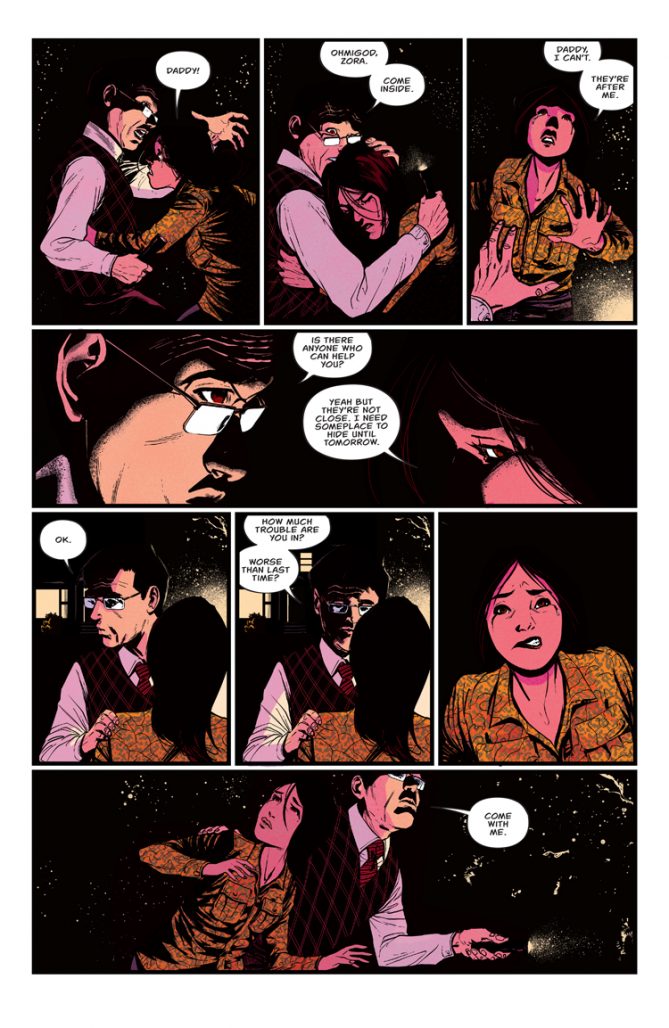
CB: When you dig into the original 9 simple reasons for succession on the Yes California site, the immigration argument would have you believe this state is the most diverse but surveys have now proven Hawaii holds that title per capita. Will we eventually see more melting pot states in this series and if so which other bordering states would you like to take on?
MP: We’re definitely planning to widen the canvas beyond just California, but it’s all driven by our characters and the world of the story. We begin in Los Angeles where the Mulholland Resistance is fighting back against a militarized Homeland Security occupying force, led by the ruthless and feared immigrant-hunter Father Rossie. But the map in the opening shows how this is a regional conflict. The Pacific Coast Sister City Alliance stretches from Tijuana to Vancouver, and the fact that the Mexican city of Tijuana has joined into an alliance with California against the US Federal Government is one of the key events that incites the President to invade California in the first place. There is also the Bunkerville Militia, a pro-Federal Government militant group that operates mainly out of Nevada and southern Oregon but is a key player in the overall conflict, for example the Militia teams with Homeland Security to seize control of the Hoover Dam. Right now Hawaii is a bit outside the sphere of the story, but we anticipate the scale of CALEXIT to grow much broader than just California. After all, the whole point is that California is the sixth largest economy on Earth, even larger than France, so a conflict between California and the US government would have global implications.
CB: Great. I know as Californians we can be the most self-absorbed in any conflict and its good to know Calexit will have impacts beyond the 101 freeway. While Calexit is fictional narrative, there’s certainly enough propaganda in the new political climate to look at. How much research into successionist movements and their history did you do? Was there anything shocking among any of it that stood out to you?
MP: Well, we’re not aiming to shock here, so all the historical research we’ve done has been to structure the storyworld as authentically as possible based on the history of California as well as the histories of various military occupations and their resulting resistance movements. While Zora and Jamil and Father Rossie might have some elements inspired by real world historical figures, we developed them as unique standalone characters with their own dimensionalities and motivations and missions and conflicts and contradictions. We try to avoid letting propaganda influence us too much because CALEXIT is about characters struggling to do the right thing as they see it, these aren’t symbolic caricatures that represent some proselytizing worldview. I hate when I read a book and realize the characters are barely veiled mouthpieces for the author’s opinion. Yes, we want the story to be inspiring, but we don’t want to be trying to tell people what to think. And we’re not trying to shock or bend over backwards with triggering imagery to show how edgy and pugnacious we can be. Even if the world of the story is inspired by where we are as a country, our number one responsibility is to serve the story and follow the characters on their journeys.
MP: Thanks, one of the galvanizing moments in the formation of Black Mask was when Steve Niles noted: “if V For Vendetta were created today, there would be no publisher for it.” Obviously there’s no quality comparison between the Calexit and V, I don’t mean to imply that, but I do very much feel like without Black Mask there would be no publisher for Calexit. So in that way I think the book really does line up very directly with Black Mask’s mission.
When Calexit is done, I hope people will walk away from it with a sense of inspiration and purpose that is not just optimistic but also constructive. The book aims to say that resistance is crucial, but it’s not enough to just resist we need to work together and build a better world, organize better options, do the hard work of creating lasting progressive infrastructure that enables us to defend and protect one another in an inclusive way. And we need to fight for what we believe in, but hopefully with unity and joy not driven strictly by anger. And so that’s why there’s the interviews in the back of the book, we’re very cognizant of the fact that dystopias can be depressing and we don’t want anyone to put this book down more depressed than they picked it up, so the non-fiction portion is intended to be positive and productive with real actionable advice for people who may not have been particularly politically active in the past but who suddenly feel the need to join the process. I don’t pretend to be some political thought leader or have any of the answers, but if Amancay and I can tell a compelling story of inspiring protagonists that celebrates the spirit of resistance and we invite some brilliant progressive leaders to suggest ways that the spirit of resistance can be actualized into real-world steps toward helping effect change, then maybe we’ve managed to be part of something really special and unique here.
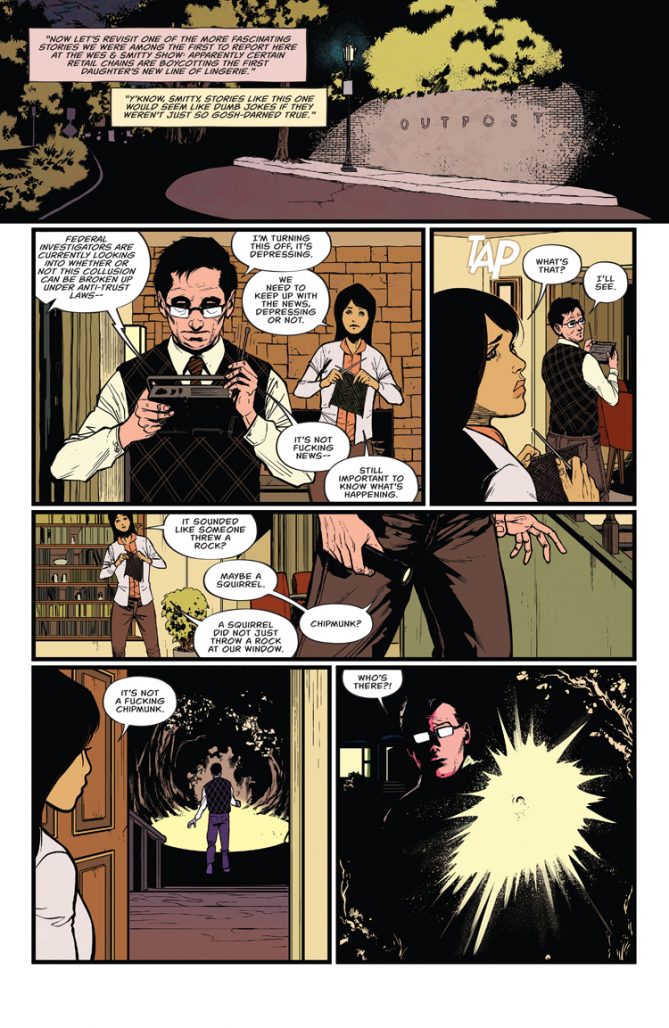


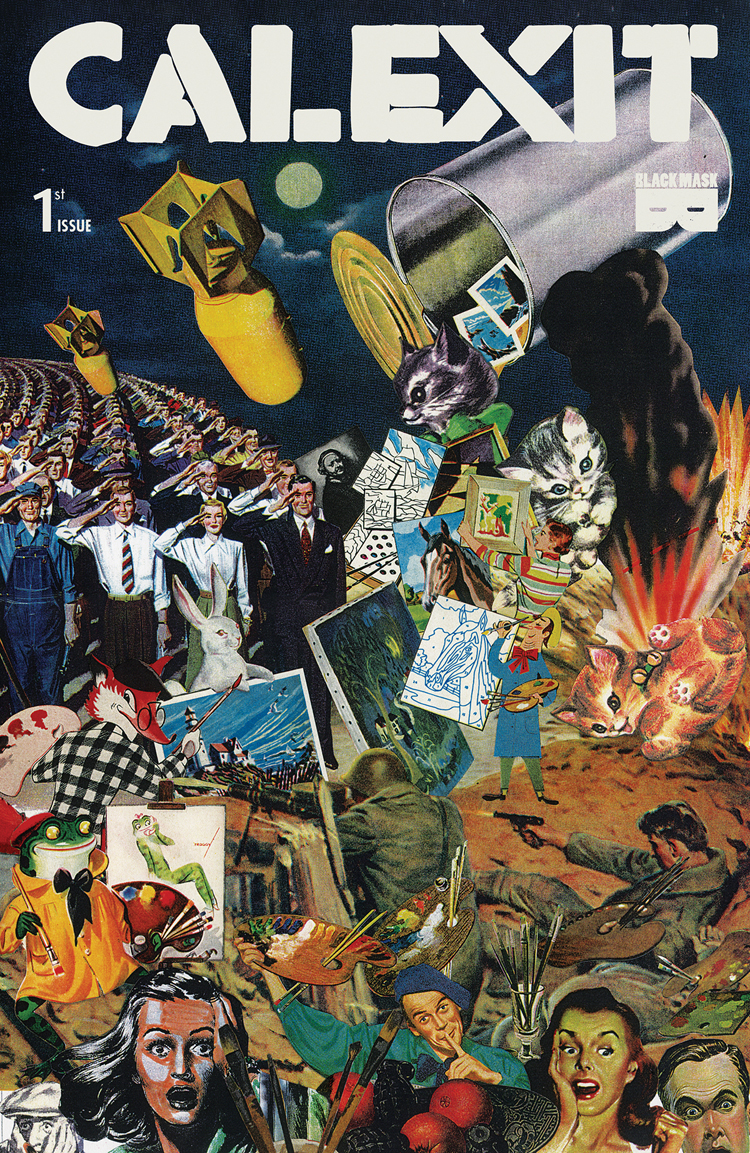

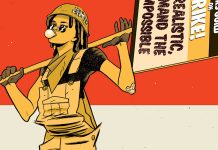
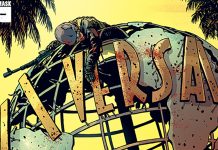



Which Vancouver? Oregon or Canada? Or both?
Just another “Right wing conservatives are evil and want to take everything away” story from the sound of it. That’s everywhere, all I have to do is listen to the news to get that.
Comments are closed.